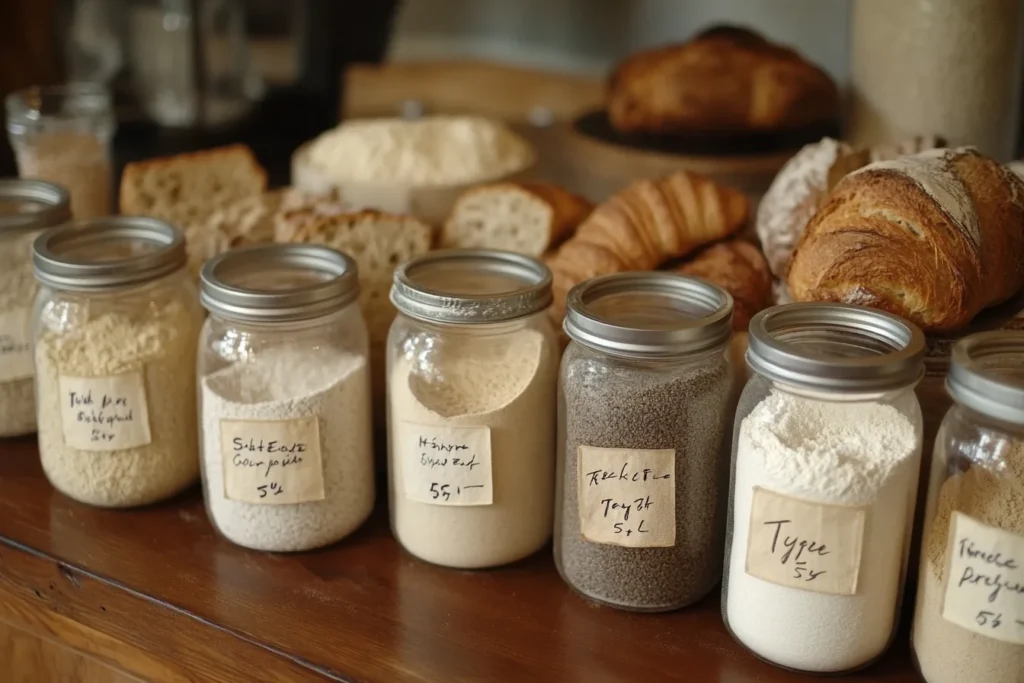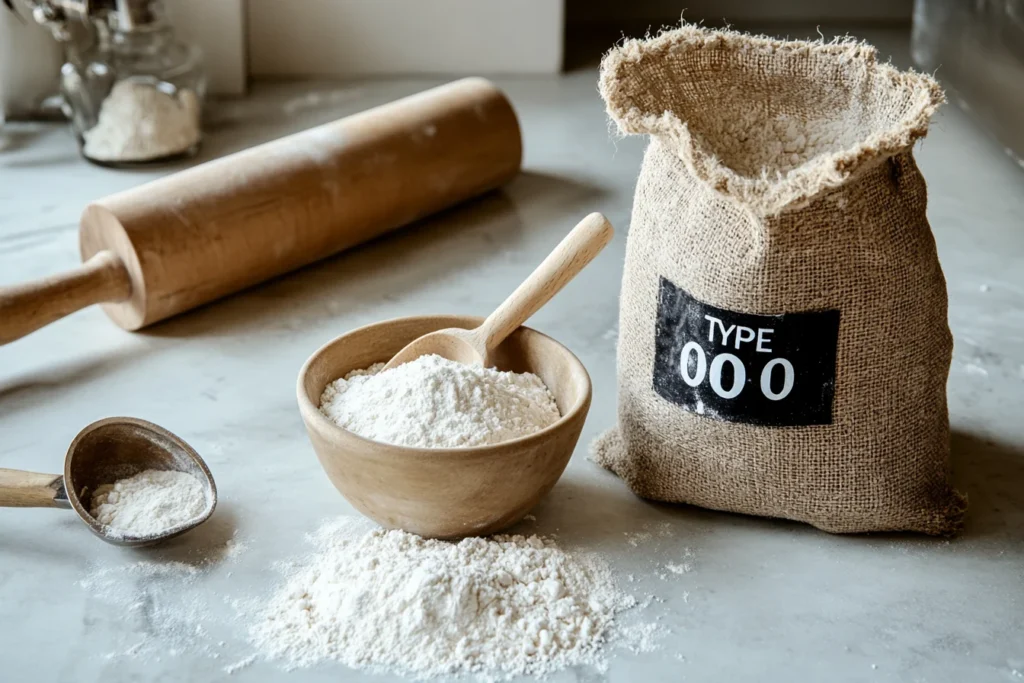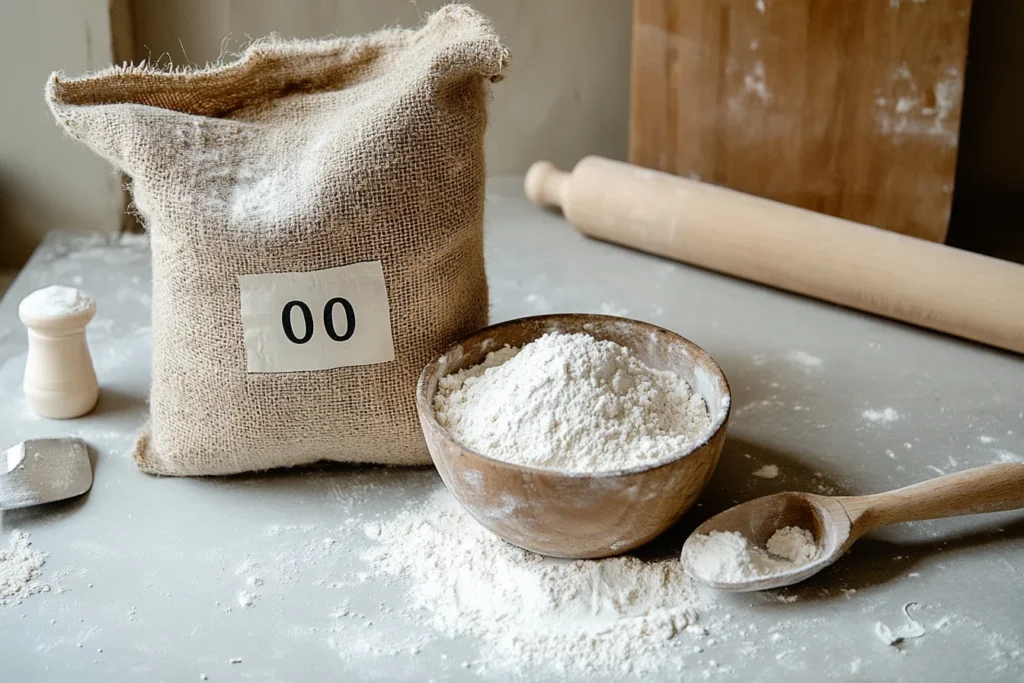Flour is the foundation of countless recipes, and in Europe, it plays a pivotal role in everything from artisanal bread to delicate pastries. But what kind of flour do they use in Europe, and how does it differ from what’s commonly used in other parts of the world? This article dives into the unique characteristics of European flour, its significance in baking traditions, and the common varieties you’ll encounter.

Table of Contents
Understanding European Flour
To understand what kind of flour they use in Europe, it’s important to consider the way flour is categorized and processed. Unlike in the United States, where flour is primarily labeled by protein content (all-purpose, bread, or cake flour), European flours are often classified by their ash content, which measures the mineral residue left after burning the flour. This is expressed in a numerical “type,” such as Type 55 or Type 00.
European milling techniques are highly refined, producing flours that are tailored for specific culinary uses. These flours are often softer and finer, making them ideal for delicate pastries or crisp pizza crusts. If you enjoy learning about cooking techniques, check out Why Do You Soak Shrimp in Milk Before Frying? for an insightful look at enhancing recipes. Additionally, Europe places significant emphasis on the origin of wheat, with specific regions producing flours suited to local specialties. For more recipe inspiration, try this Scalloped Potatoes Recipe with Cheese Powder to see how pantry-friendly ingredients make a difference.
Key Characteristics of European Flour:
Type-based classification: Indicates ash content, not protein level.
Regionally sourced: Local wheat varieties influence texture and flavor.
Finer milling: Results in smoother textures for specific recipes.
By examining these traits, it becomes clear why what kind of flour do they use in Europe is such an intriguing question for bakers worldwide.
The Role of Flour in European Baking Traditions
Flour is at the heart of Europe’s rich baking way of life, which spans nations and centuries. To absolutely grasp what type of flour they use in Europe, it’s essential to discover its role in conventional recipes.
Why Flour Matters in European Baking
Flour isn’t just an ingredient—it’s the soul of iconic baked goods like French baguettes, Italian focaccia, and German rye bread. Each recipe depends on a specific type of flour to achieve its signature texture and flavor. For instance, the light, airy crumb of a croissant relies on the fine grind of Type 55 flour, while dense, hearty breads are made with rye or spelt flours.
European bakers value tradition, often sticking to locally grown wheat varieties and time-tested techniques. The flour’s ash content, protein levels, and milling process directly impact the final product, giving European baked goods their distinct qualities.
Cultural Significance of Flour:
French Baking: Relies on low-ash, finely milled flours for pastries and bread.
Italian Baking: Features high-protein flours like semolina for pasta and pizzas.
German and Scandinavian Baking: Heavy use of whole grains, rye, and spelt for dense, flavorful bread.
Understanding what kind of flour they use in Europe also highlights how deeply rooted baking is in the continent’s culinary heritage.
Common Types of Flour Used in Europe
When it comes to what form of flour they use in Europe, there are numerous sorts that stand out. Each kind has specific traits, tailor-made to different baking needs.
Type 00 Flour
This ultra-fine, soft wheat flour is a staple in Italy. Its low protein content makes it perfect for thin, crispy pizza crusts and silky pasta dough.
Type 55 Flour
Widely used in France, this flour is ideal for baguettes and pastries. It has a moderate protein level and fine grind, balancing strength and tenderness.
Rye Flour
Popular in Germany and Nordic countries, rye flour is packed with nutrients and has a robust flavor. It’s used for dense breads like pumpernickel.
Spelt Flour
A traditional grain, spelt flour is versatile and has a slightly nutty taste. It’s common in both sweet and savory recipes across Europe.
Semolina Flour
This coarser, golden-hued flour is synonymous with Italian cooking. It’s commonly used for making pasta and gnocchi.
Summary of Common Types:
Type 00: Italian pizza, pasta.
Type 55: French bread, pastries.
Rye: German breads, crackers.
Spelt: All-purpose in sweet/savory dishes.
Semolina: Pasta, specialty bread.

Specialty Flours in European Cuisine
When thinking about what sort of flour they use in Europe, area of expertise flours stand out for their specific roles in local cooking. These flours move past general wheat sorts, imparting numerous textures, flavors, and dietary profiles.
Examples of Specialty Flours
Buckwheat Flour: A key ingredient in French crêpes and Russian blini. Its earthy flavor and gluten-free nature make it ideal for specific recipes.
Chestnut Flour: Popular in Italy and Corsica, this naturally sweet flour is used for cakes, pancakes, and festive breads.
Einkorn Flour: An ancient grain with a nutty taste, it’s a staple in traditional breads across Central and Eastern Europe.
Corn Flour (Polenta): Essential in Italian cuisine, it’s used for creamy polenta and baked dishes.
Potato Flour: Common in Scandinavian cooking for tender cakes and gluten-free bread.
Specialty flours are chosen based on tradition and regional ingredients, showcasing the importance of understanding what kind of flour they use in Europe.
Flour Milling Practices in Europe
Understanding what kind of flour they use in Europe requires a look at how it’s made. European milling practices emphasize quality, tradition, and adaptability for specific baking needs.
Key Features of European Milling
Stone Milling: Traditional stone mills are still used in many regions, preserving the flour’s natural nutrients and flavor.
Refined Techniques: Modern roller milling allows for precise adjustments, producing fine flours like Type 00 and Type 55.
Regional Variations: Flour is often milled locally, reflecting the unique characteristics of the area’s wheat.
Minimal Processing: European flours typically undergo less bleaching or chemical treatment compared to other regions.
These methods highlight the meticulous attention to detail behind what kind of flour they use in Europe, ensuring optimal texture and taste in baked goods.
Understanding Flour Classification Systems in Europe
One of the most distinct aspects of what kind of flour they use in Europe is the classification system. Unlike other parts of the world, European flours are categorized by ash content, which influences flavor, texture, and performance.
Common Classification Types
French Flour Types: Numbers like Type 45 (for cakes) and Type 55 (for bread) indicate lower ash content, making them ideal for light, refined pastries.
Italian Flour Types: Type 00 is the gold standard for pasta and pizza dough, thanks to its ultra-fine grind and low ash content.
German Flour Types: Numbers like Type 1050 (medium grind) and Type 1150 (heavier grind) are used for hearty rye and whole-grain breads.
Scandinavian Flours: Often include rye-based classifications, emphasizing robust, nutrient-rich options for traditional recipes.
By understanding these systems, bakers can select the perfect flour for their needs, further unraveling the mystery of what kind of flour they use in Europe.
Health Benefits of European Flour Varieties
Beyond their culinary versatility, what kind of flour they use in Europe often comes with added health benefits. European flours are celebrated for their nutrient density, traditional grains, and minimal processing.
Nutritional Advantages
Whole Grains: Rye, spelt, and einkorn flours retain more fiber, vitamins, and minerals compared to heavily refined flours.
Low Gluten Options: Buckwheat, chestnut, and potato flours offer gluten-free alternatives without sacrificing taste or texture.
Ancient Grains: Flours like einkorn and emmer contain higher levels of antioxidants and protein.
Fewer Additives: European flours typically avoid chemical bleaching or enrichment, resulting in a purer product.
Regional Variations in Flour Usage
To recognize what form of flour they use in Europe, it’s essential to discover how one-of-a-kind areas have tailored their flour usage to nearby culinary traditions. Each u . S . A . Boasts a unique method that reflects its cultural identity and natural resources.
Examples of Regional Flour Usage
France: Known for Type 55 flour, perfect for baguettes and croissants. In Brittany, buckwheat flour is used for traditional crêpes.
Italy: Famous for Type 00 flour, essential for pasta and pizza. Semolina flour is also widely used for its coarse texture and nutty flavor.
Germany: Focuses on rye and spelt flours for dense, flavorful breads like pumpernickel and Vollkornbrot.
Scandinavia: Emphasizes hearty whole-grain and barley flours in breads and crackers.
Eastern Europe: Wheat and potato flours are used for dumplings, while einkorn flour features in traditional flatbreads.
By highlighting these regional preferences, it’s clear that what kind of flour they use in Europe is deeply tied to geography and tradition.
Modern Trends in European Flour Usage
While tradition remains important, what kind of flour they use in Europe has evolved with modern food trends and consumer preferences. Today’s flours cater to changing dietary needs and culinary innovations.
Key Modern Trends
Gluten-Free Options: Growing demand for flours like almond, coconut, and rice to support gluten-free diets.
Organic and Sustainable Flours: Consumers favor locally sourced, organic grains that promote environmental sustainability.
High-Protein Flours: Popular for creating artisanal bread with robust structure and chew.
Multi-Grain Blends: Combining grains like oats, spelt, and rye for enhanced flavor and nutrition.
Alternative Grains: Flour from ancient grains like teff, quinoa, and millet is gaining popularity for its unique taste and health benefits.
These trends show how what kind of flour they use in Europe is expanding to meet the demands of contemporary bakers and health-conscious consumers.

How to Choose the Right European Flour for Baking
Selecting the best flour for your recipe can feel daunting, especially when exploring what kind of flour they use in Europe. However, understanding key factors can help you make the right choice.
Tips for Choosing the Right Flour
Consider the Recipe: Match the flour to your dish—Type 55 for French bread, Type 00 for Italian pizza, or rye for hearty loaves.
Check the Ash Content: Lower ash content (Type 00, Type 45) suits delicate pastries, while higher ash content (Type 1150) is ideal for rustic bread.
Evaluate Gluten Levels: High-gluten flours work for chewy bread, while low-gluten options are better for tender cakes and cookies.
Explore Specialty Flours: For unique flavors, try chestnut, einkorn, or buckwheat flour.
Look for Local Products: European flours often reflect regional authenticity—choosing one from the area of the dish’s origin can enhance its flavor.
Frequently Asked Questions
What kind of flour is Type 00?
Type 00 is an Italian flour, finely milled with low ash content, ideal for pasta and pizza dough.
Can I substitute European flour with all-purpose flour?
You can, but results may vary. European flours like Type 55 or rye have specific textures and flavors suited for traditional recipes.
Is European flour healthier?
European flours often use whole grains and ancient varieties, making them richer in nutrients like fiber and antioxidants.
What makes European flour different?
European flours are classified by ash content, are often finer, and focus on local wheat varieties for distinct textures and flavors.
Conclusion
Understanding what kind of flour they use in Europe reveals the region’s rich baking traditions and innovative trends. European flours are uniquely suited to their culinary uses, from delicate pastries to rustic breads, thanks to their regional origins, milling techniques, and classification systems.
Whether you’re using Type 00 for a crisp pizza crust or rye for hearty bread, European flour transforms recipes with authentic flavor and texture. By exploring these flours, you can recreate the magic of European baking in your kitchen and enjoy the health and taste benefits they bring.

